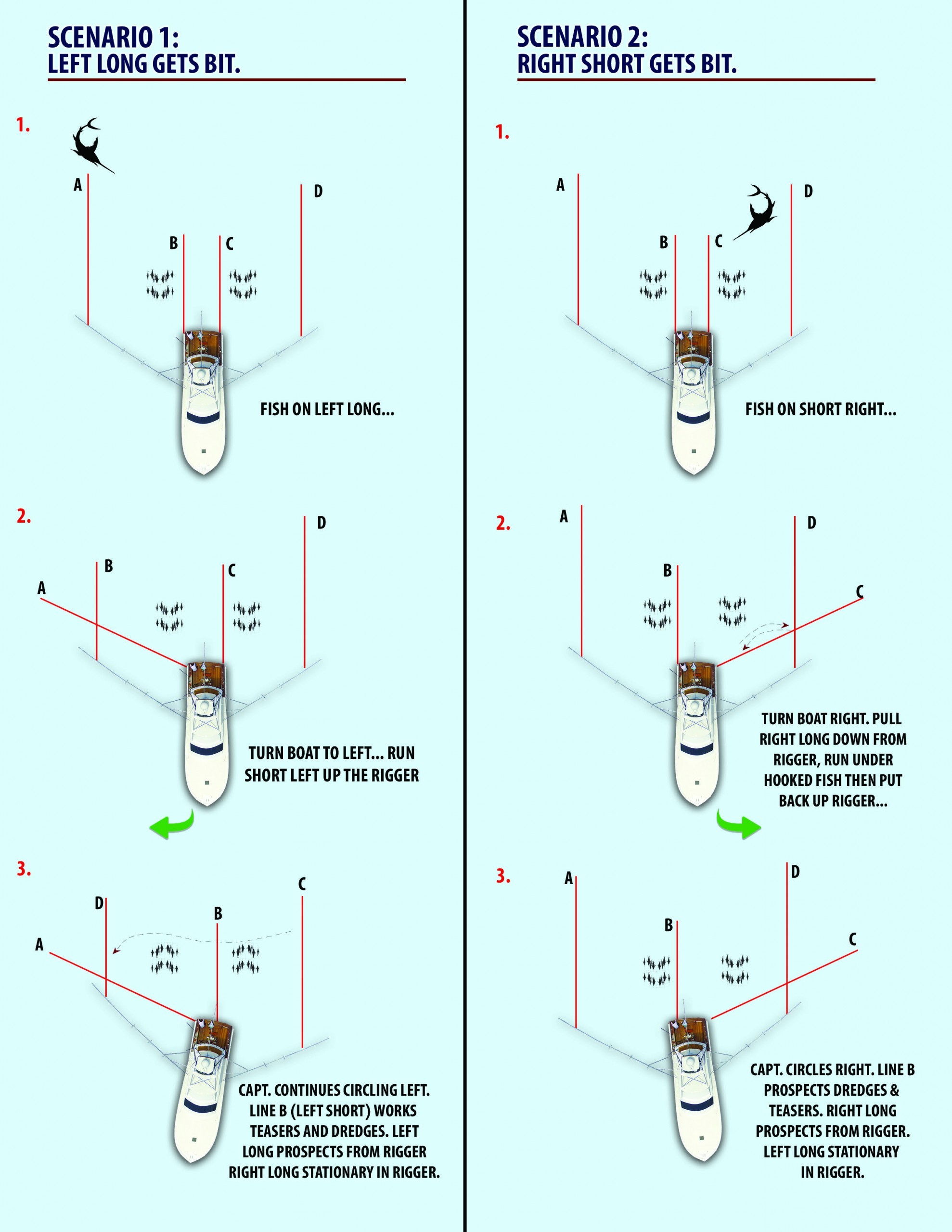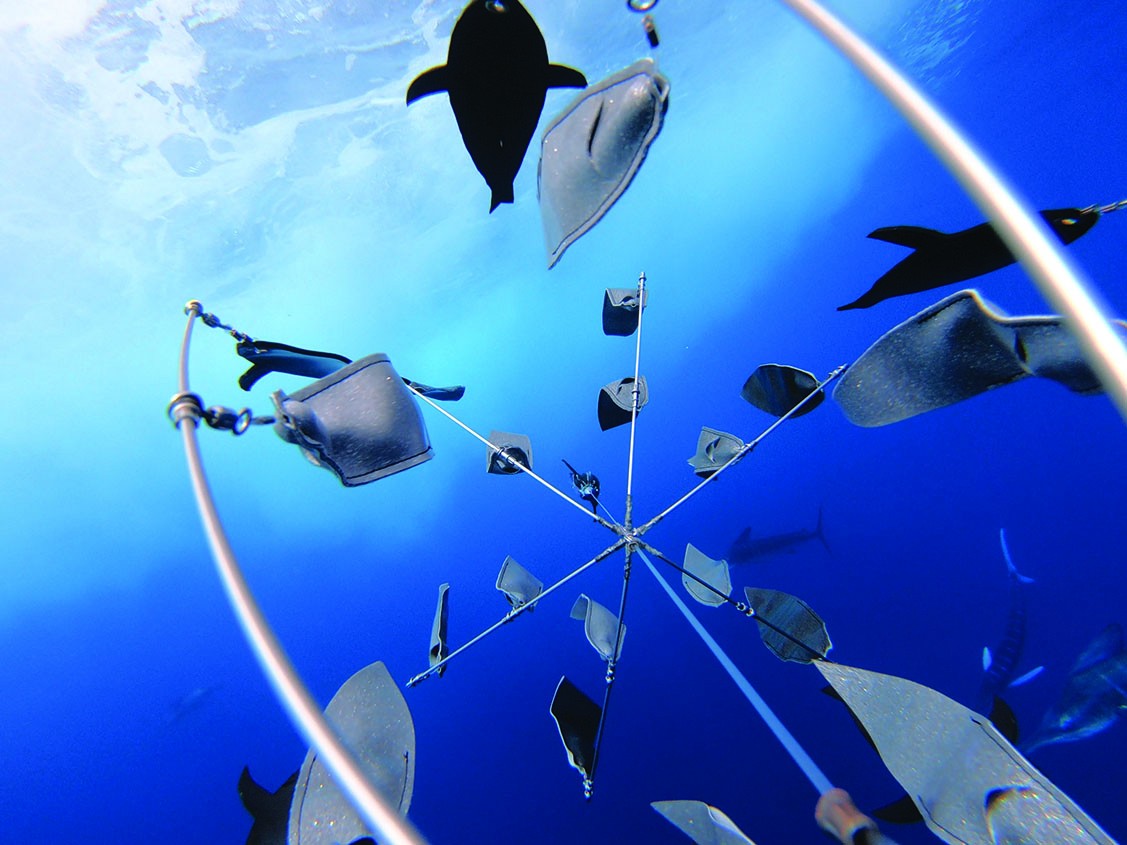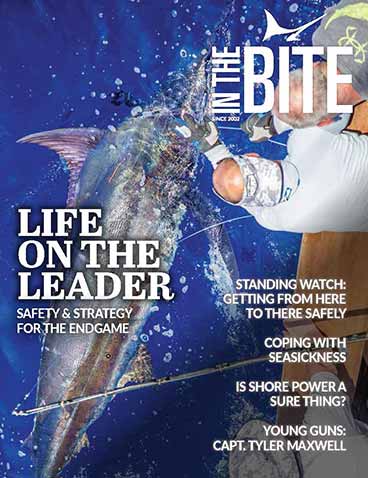When you are fishing against some of the best captains and teams in the world, tournament fishing demands discipline and commitment. Some may think that fishing means putting baits in the water with a few teasers and cracking a beer on the air-conditioned mezzanine while watching the ballyhoo swim behind the boat in the clip with the clickers on. Personally, with experience purely in Costa Rica and Baja, I hate clickers. Sailfish are some of the most finicky fish in the ocean; if a fish hits a bait and the clicker is on the reel there is resistance, however slight it may be.
There exists a chance of your fish feeling that resistance. With this risk, the probability of your fish consuming the bait, especially if it is not an aggressive bite, decreases dramatically. It is for this reason that rods need to be held at all times with the clickers off, so the angler can be ready for every single fish that comes into the spread. Otherwise as the saying goes, you aren’t fishing, you are trolling. To fish competitively in a numbers tournament, an angler cannot afford to swing a hookup ration of below 80%. This is a lot to ask of an angler under any circumstance. To have a chance to make this happen rods must be held, clickers off. Some may even take this a step further, suggesting that the flatlines need to be fished out of the clips because the clips, like clickers, offer resistance.
Standing on rods all day, every day for multiple days of tournament fishing is physically and mentally demanding. There are several approaches that can be used to provide anglers with the breaks necessary to keep focused and fresh. One of these is perhaps the most straight forward: to rotate anglers from spot to spot, providing intermittent breaks by including more anglers than rods (five people fishing four positions, for instance).
Rule Two: Move Your Lines Properly
Without Entanglement Any good fisherman knows that fish like sailfish and white/striped marlin often travel and feed in schools. As a result, when one fish eats, chances are other fish may be eating/ready to eat as well. This is why captains turn on hooked fish, circling to try and get more bites before the release. As an angler, your job will be one of two things. If you are hooked up, keep your line tight and communicate with your captain. If not hooked up, youll need to move your bait to maximize chances of getting bit.
When catching a fish, it is important to keep your rod tip high and line tight in order to minimize belly in the line. Doing so will not only help you keep a good grasp on where your fish is, but it will help your captain and teammates identify the location of your fish. Knowing the location of the fish that is hooked is the first step in knowing where other baits need to be placed to maximize chances of getting bit.
The hooked fish will always make up the inside of the turn, the epicenter of the action. If fishing four lines with one angler hooked up, three baits are still fishing. Ideally if lines are moved properly, two baits are being fished in the outriggers as long lines and one as a flat/short line, prospecting the inside and working the remaining teasers.
If the inside long is the first bait bit, the outside long will be moved to the inside long position. The outside flat will be moved up to the outside long. Once the newly positioned outside long is run through the rigger clip and into position, it should be held steady and remain in its position. The angler in this position is the only one in the spread who is not prospecting. Why?
As the boat turns, the bait in this position will be moving faster than any of the other baits in the spread. Dropping the outside long back in a turn might cause it to interfere with the very important prospects of the inside long (the inside long is the bait closest to the action of the jumping fish and thus has a good shot at attracting the next bite). Think of it this way, while the inside long angler is dropping and reeling his/her bait, prospecting to simulate a stunned/injured fish, the outside long bait is swimming faster than any bait in the spread. This provides variability and, in my mind, increases the chances of exciting a fish and producing a bite.
The angler on the inside long is responsible for two things. First, getting his/her bait as close to the hooked fish as possible (without entanglement). Next on the agenda: prospecting, prospecting, prospecting. The flat line is responsible for fishing close: prospecting the remaining teasers, often both dredges and the outside chain. Where the outside long is the fastest moving bait in the spread, the inside long is the slowest. By getting your bait close to the hooked fish, dropping it for a prospect will simulate a dead/stunned/injured fish falling, and reeling will simulate a frantic fish escaping. This, if done correctly, will excite surrounding billfish and ideally result in a bite.
To me, the inside long bite is the most delicate, often wildly difficult to sense as a result of the lack of tension on the line. The inside long line in a turn is without a doubt the hardest to fish. As there is so little tension on the line, it can be hard to feel the bite much less see the fish eat seal the deal, and set the hook. That being said, if fished correctly it can be the most likely bite to receive in a turn.
If you are holding your rod in this position and feeling your line as you should be (Rule #1), and you think maybe you have gotten a bite, the trick is to not leave room for second guessing. If you think youve had a bite, come up with the drag and reel like crazy for an uncomfortably long time in order to set the hook into the fish mouth. It is better to be mistaken about a bite and to have not received one, than to be unsure, not react, and miss a fish. No one cares if you think you got a bite but did not. Everyone cares if it is the other way around.
Pro Tip: The outside long should not be fished too far out. In a tight turn, the bait will drift over toward the inside and it is important that it does not interfere with the inside long ability to prospect freely. Given this tendency and the prospect of tangling both long line handlers must know where their baits are at all times so as not to foul up the baits. If a flat line is the first to get hooked, and the captain begins the turn, the inside long line of the turn will end up under the hooked line nearly every time. As a result, it is crucial that when the turn begins, the inside long rigger is pulled down and moved under the hooked line to free it of tension. Once clear of the hooked line, it should then be re-installed in the outrigger to be fished correctly, prospecting in the turn.

Rule Three: Always Know Where Your Bait Is
Hooked fish can go crazy. Every scenario is different and often you cannot ascribe a formula to the action taking place in the spread i.e. if a blue marlin bites the outside long, it will jump to the right. If you have any doubt at all on where your bait is and if you are clear of all other lines, reel up until you find your bait and can confirm its location and that it is free of entanglement.
If your inside long line is too close and can no longer prospect freely due to the location of the outside long, have the outside long move to the inside outrigger and move your long line now to the outside. Always be ready for a bite, as it is not uncommon for the outside long to get bit when it is popped out of the clip to move to the inside rigger.
Rule Four: Keep Your Baits in Blue Water
Billfish are visual hunters. There a reason why you search out clear, blue water to troll in as opposed to the greenish, pea soup variety. Keeping your bait in blue water is another important aspect of thinking like a fish (see rule five). If you are fishing your bait in the wash, the sailfish/marlin isnt going to see it. This can get tricky especially when teaser fishing but if the fish cant see the bait, it cant eat the bait. The more time you keep your bait out of the wash, the more likely you are to be successful.
Rule Five: Think Like a Fish
What is the fish seeing? What is it doing? What is it thinking? How is it acting? Is it hungry? Lazy? Uncertain? Sometimes fish come in hot, ready to eat with an aggressive bite. In this case, you just need to be ready to feed the fish. Sometimes, however, fish come in lazy. Sometimes they may just swipe at the bait, put the bait in its mouth, play with it before deciding whether or not to consume it. Every bite and every fish is different. Some of the best advice I ever received came from an old Costa Rican a man that had grown up fishing for sailfish and had seen more than I could have imagined. As great advice often is, his was timely. It came in the beginning of my fishing learning curve, right when I was trying to learn the right technique; searching for the magic touch necessary to hook fish consistently.
To prove just how timely the advice was, as he spoke to me, I even had a fat blister on my thumb, taped up with electrical tape the result of applying too much pressure to the reel while feeding a fish. I had just missed yet another bite. I turned to him in frustration, demanding answers to the mystery that caused my mess-ups.
In his purely Tico, Pura Vida way, he just smiled and told me, You have to think like a fish. To this day that advice rings true every time Im watching the spread. What are the fish seeing? What do they hear? What are they thinking? Are they hungry? Lazy? Have they been attacking the teasers today? Hitting the longs? Are they fading? If someone misses a fish, are they eating again? These are all questions that I ask myself when fishing so that I may have the chance to foresee a bite before it happens, and frankly, often I do.
By taking in your observations as to how the fish are acting, you can sometimes predict what is to come. Knowing that fish have been lazy at the strike can help you feed them a bit longer or be that much more gentle in handling the line on the next bite. If theyre wide open and mashing everything in sight, you can just hang on and be that much more alert. Beyond the benefit to hooking fish, this can also be a confidence builder to yourself as an angler. During a highly stressful numbers competition, when every bite counts, keeping yourself and all of the anglers in a good frame of mind can make all the difference.

Prospecting and Situational Awareness in the Spread
Sailfish, like striped and white marlin, feed in groups. They surround schools of bait, herding them and taking turns picking off the stragglers. Often time they swipe with their bill to stun the bait providing an easy feeding opportunity. It is for this reason that prospecting, the act of dropping back your bait and reeling it in, can be so effective. Any time fishing a straightaway, prospecting flat lines can increase your chances for a bite. When in a turn, either hooked up or not, the inside long can attract billfish by prospecting as well.
Let say a fish comes up on the right teaser, and the captain turns to keep the teaser and corresponding flat line in blue water. Instead of feeding or keeping on the teaser, however, the fish then fades. Which long line is most likely to be hit on the way out? The outside long, because when in the turn it will be nearly directly behind the inside flat. In this scenario, the fish came in on the teaser but then faded, indicating that it might be lazy when feeding. The outside long should be ready for the bite. If not received right away, the angler in this position should be ready with a deep prospect.
Written by Guest Author Katie Coeckelenbergh













